The architecture of Ox-Bow presents a study in contrasts that demonstrates the progression of the needs and personality of the campus as it has grown and shifted over the past 100 years. There has been much documentation and research of its rich architectural history- most recently an information-packed chronicle of the 40+ major buildings of Ox-Bow’s campus was compiled and self-published by Judy Anthrop. The campus began as repurposed farm houses and a fisherman’s inn (which was also a farm house in the way olden days) that was gradually augmented by the founding fathers as they built their own private cabins. These cabins, The Tallmadge, The Mason, The Scanlon, The Norton, and successive buildings, represent a time before the bureaucratic trappings of modern building permits and codes rendered architectural design antiseptic and institutional. These buildings resonate with a certain character reflective of the artists that built them and were oftentimes built in a precarious and unprofessional fashion. As the camp’s history has progressed into the contemporary moment evidence of modern code- respecting building practices is evident, particularly in the “master plan” expansion building of 2006- 2008. While the design of many of these buildings blends seamlessly with the landscape and already- jumbled styles of architecture on campus, the interiors of these buildings are plagued by soulless fire doors, exit signs, and push bar, safety door fixtures. However, out in the woods, staff members of Ox-Bow carry on a tradition of artist designed, DIY, renegade structures that are in synch with the visionary buildings designed and built by artist/builders such as Thomas Eddy Talmadge, Peter McGee, and George Dowler. Oftentimes, these structures fill specific needs of the community, acting as structures for cooking, storage, and studio areas. In harmony with the artistic spirit of the place, they take on handmade and charming physical presence. Also of note is the ethic of repurposing and recycling materials from within campus. I will explore the latest crop of these structures, all built within the past two years, through interviews with their creators.
The first in our series of interviews finds us having a chat with Ox-Bow’s Head of Maintenance and Grounds, John Rossi, a man who embodies the tradition of visionary building and has a profound working knowledge of Ox-Bow’s campus and also knows a thing or two about the history of its architecture.
EM: Tell us a bit about the early days, when the founders first built the cottages to their own unique specs.
JR: I would say in those days no one (from the town) would come back here and there were no building codes, so they could erect their own cottages. These were artists with building skills or architectural knowledge. But they weren’t really professional builders and they made mistakes, a case in point would be the Scanlon.
EM: It seems to me like the first modern building here is the painting studio.
JR: Well yeah, at that point they had to go through the process of getting permits. There were still buildings being built by artists then too. The painting studio was built in 1975, right after the Sara and the George, which were built in 1972 and 1973. The George was built by George Dowler (a maintenance man during the late 60’s, early 70’s). He just went ahead and built it (his namesake cabin) and I think it was a time when the board was down on building new buildings. He sided it originally with Celotex or cheesy particle board and in 1995 we took that siding off and re-sided it with better material. What I did was different was that I ran it horizontally, rather than vertical, not like something cheesy that you would see in a suburban backyard. The Sara was built in 1973 and sided with salvaged wood form the 20s or 30s and there were two styles of siding, styles you see on cottages from the 20’s or 30’s but on a building built in a 1970s style.
EM: Tell us about the McGee
JR: Peter McGee was a builder and an artist who built the Wet (Ox-Bow’s free standing shower house). He was a successful contractor on the west coast who in his 30’s or 40’s decided to get an arts degree. He was here in the early 80’s.
EM: You built a cabin that you named for him, was that the first building that you built here?
JR: Up until then I rebuilt some of the old buildings. I rebuilt the back of the Hotdog Stand and the Hotchkiss. We would clear up areas where there was rot and decay. The McGee was built in 2003. It was not part of the capital campaign planning at the time, so you might call it renegade. During the opening of summer 2003, I think it was George Liebert who decided that the Kim was filling up with too much crap like party costumes and there was not enough room for the Friday night auction walls and chairs. So we built a storage shack to house those items. I don’t think George imagined that we would build it so elaborately- I had one really good fellowship student working with me who had carpentry skills named Rob Bell. When we were working on this building, we were looking a lot at the buildings downtown which have a certain style of architecture, maybe sort of Gothic or Victorian with a board and batten style, or a type of pole barn style. It was like the buildings around downtown, the old Lutz, the Adam and Eve mostly using horizontal framing with siding hung vertically using rough sawn planks. They don’t quite build like that anymore, nowadays you’d use plywood, running battens vertically attached to the siding.
EM: And what about the Badboy?
JR: The Badboy was also built in 2003. When they were setting up for the summer benefit, the tents that they erected didn’t connect to the painting studio, there was a gap. They were worried about if it rained, so I said, don’t worry, we’ll build a little dog house. It was a slopped together structure, I was working with Alex who wasn’t in the mood that day. Then after the benefit I looked at it and said why should we take it apart, so we moved it over by the Rob. I made a little sign for it that said “Badboy”. We had an idea to move it onto the meadow and throw a cocktail party, people really liked it. It became a renegade, portable structure that eight people could move. Papermaking uses it to shelter their cauldron and it has hosted many more cocktail parties.
EM: Tell me about the chicken coop.
JR: The chicken coop (and raising chickens) was an idea Mikey and I had down in New Orleans. We were visiting a friend of his who had a chicken coop in his backyard. Mike and I thought it would be cool to have chickens at Ox-Bow. It made sense, artists come here to relate to nature. Mikey proposed the idea to the administration and it was popular. In the spring of 09 we started to build it (and got chicks). A woman on our board, who was a contrator from Grand Rapids had a warehouse full of wood and told us that we could load up. We got some nice wood, usually when you build a chicken coop you don’t use such fancy wood. Mikey helped designed it and Pauly and I built it. It is portable, but its not so easy to move.
EM: Tell me about the barn.
JR: The barn was a 4th of July parade float originally. That year for the first time we built the float on a trailer (as opposed to the back of the camp pickup truck) that was a nice size. The inspiration for the barnyard theme was getting chickens on campus. I remember when I built it I had it in mind to build it so that it could be lifted off the back of the trailer.
EM: Did you have a secondary function for the structure in mind?
JR: Remotely in the back of my mind. I thought it would be cool to build it so that we could lift it off and do something cool with it. I didn’t realize that it would become a storage building until we took it off the trailer and set it behind the Red Top. Pauly and I discussed it being a cool storage shed. We had put a lot of work into it. When I ran the idea by the administration, they said it was cool. I sold it to them by explaining that it would clean up the yard behind the Rob. It serves a very important function by holding Friday night DJ equipment and lightbulbs and different areas to store miscellaneous stuff. There is also an internet router in there and a little desk. It is a safe place to store my laptop away from the dust in the Rob. Its nice to be able to check the weather online so maintenance can plan its day.
EM: So that’s where the name Barnyard Café comes from?
JR: It has a little internet booster for the Rob and Lutz. Its kinda my office. Its hard for me to stay organized in the Rob and this helps with that.
EM: So that leads us to this years float:
JR: This year’s parade theme, of course, was a traveling circus sideshow. I imagined the truck pulling a Victorian style circus caravan. I found pictures online for inspiration. We strated building it on another flat bed trailer, which was even bigger than last year at 13’ X 7’, the barn is 7’ X 6’. And so we built it starting with the framing and then we sided it. I put gingerbread on it to make it look more exciting as well as the decorations, the painted signs and graphics. The trim and the paint colors- teal, red, and orange brought it all together. So that was another one that I thought had real potential. I thought it could be a studio space. We built a platform for it and are now building a floor. I am beefing up the structure and it could just last a good 30 or 40 years. There was some discussion of its location. I suggested it might go near the Sara and the George, but that might tie it too much to the the people that live in those cabins. The alternate idea was to put it between the Bogart and the Works on Paper studio and I thought it was a great idea. It could be more useful and flexible. I’m excited to keep working on it this fall.
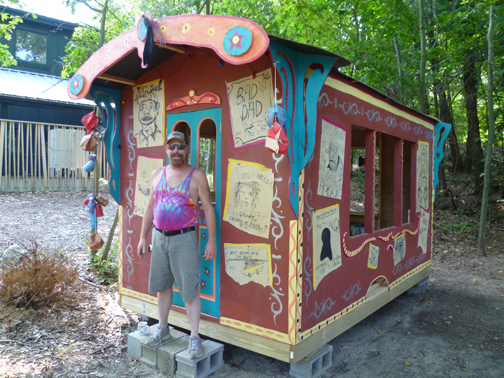
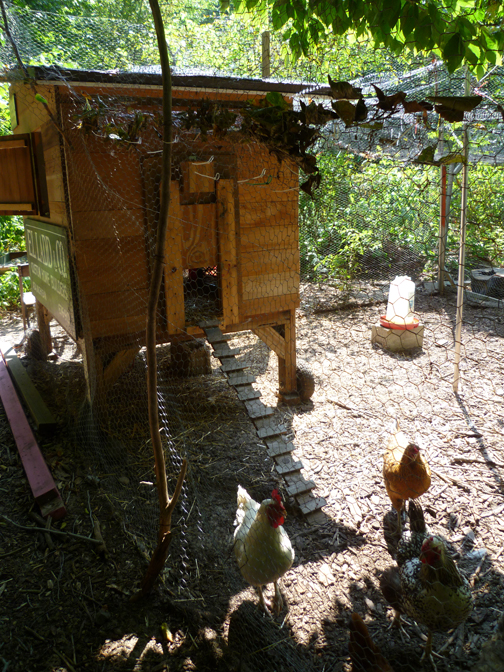
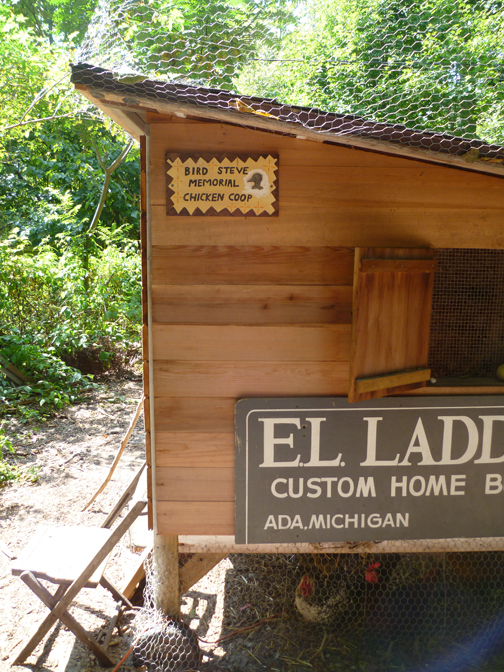
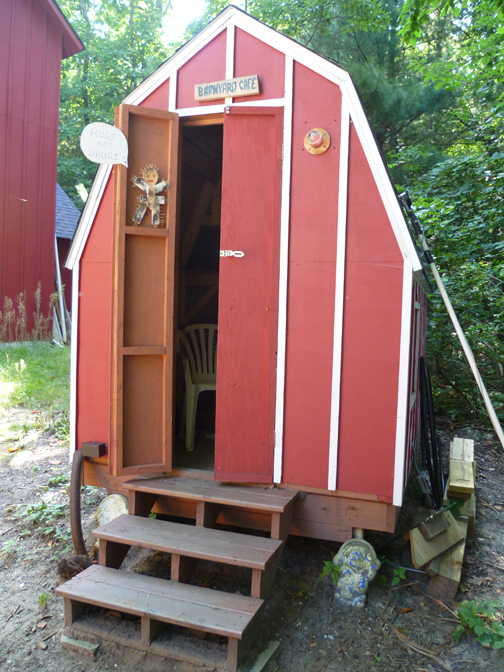
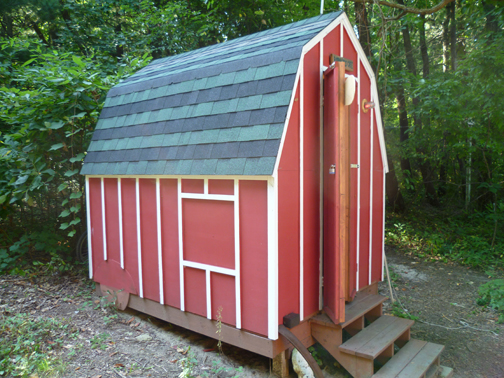
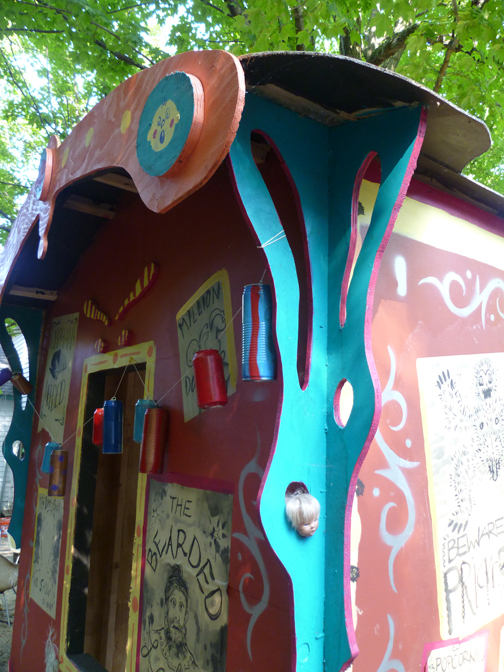
One Comment